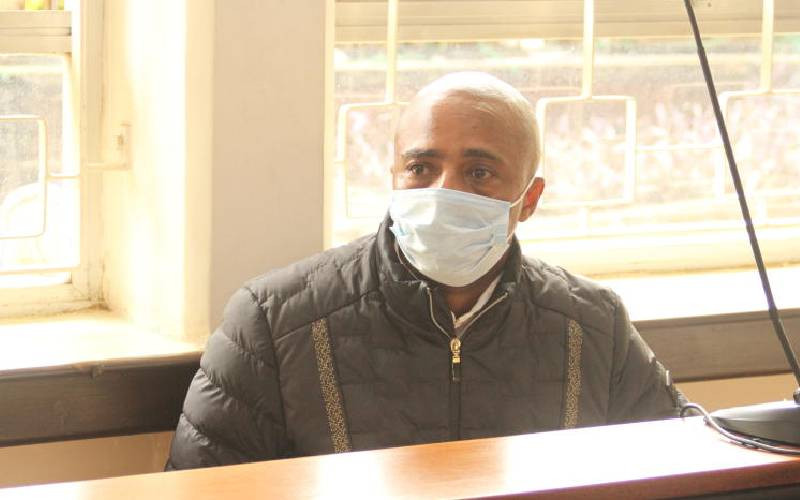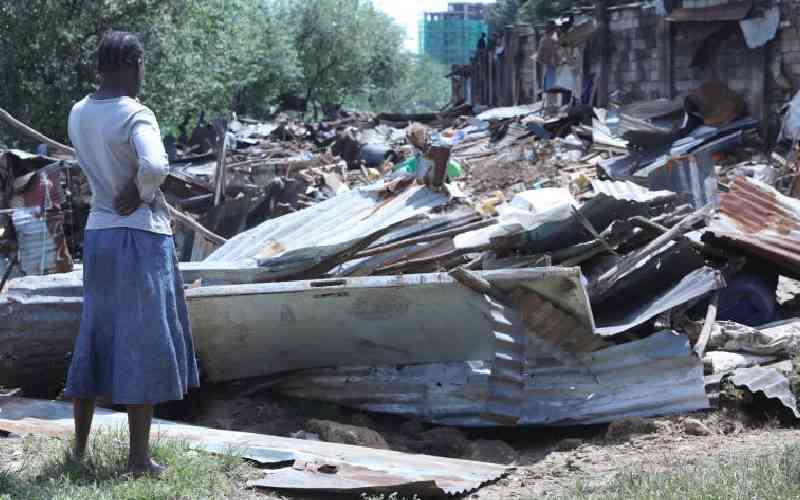A disturbing trend is manifesting itself in developing countries – the uncalled for craving for nuclear energy.
Its equation with economic and industrial revolution in the third world is a smack in the face of environmental and grave safety concerns.
Hearing Energy Minister Kiraitu Murungi say solutions to Kenya’s energy shortfalls lie in nuclear power, one is confronted with the enormity of knowledge gaps around the technical setbacks associated with this intricate technology.
As the world marked the 26th anniversary of the worst nuclear disaster yesterday, some 4,000 people will lose 13 years of their total life expectancy in the former Soviet Union, thanks to effects of the Chernobyl nuclear accident.
The accident occurred on April 26, 1986, when a reactor burst at the Lenin Atomic Power Station at Chernobyl due to an operational error, spilling radioactive waves.
A radius of 30km was declared an exclusive zone and more than a hundred towns overlooking the Belarus/Ukraine border evacuated.
Victims are today as sad as they were 26 years ago after the accident, blamed on human error and imperfect technology. Today, researchers fear at least 4,000 people will die of cancer from the accident.
While Britain, Germany, France and other large economies contend with plans to phase out nuclear power, the Chernobyl shadow and the recent Fukushima nuclear crisis in Japan are a stark reminder of the core dangers of radioactive energy.
begging question
Germany has recently announced plans to close all its 17 nuclear reactors by 2022, a signal of loss of faith in the technology.
And as Kenya champions plans to go nuclear, which Kiraitu believes will offer lifeline to the economy, a quick reassessment of the dream is crucial, given that the technology Kenya and other developing countries are pursuing is not dissimilar to what established economies are running away from.
Nuclear Electricity Project Committee chairman Ochillo Ayacko last month said Sh252 million would be spent on training Kenyan personnel on the technology before it is rolled out. Some Kenyans, he says, are already undergoing training in South Korea while others are studying locally on the legal and regulatory frameworks for nuclear power.
But the begging question is whether Kenya’s nuclear ambitions will be productive, given the country’s inadequate financial and technological standing.
There is also the global view that nuclear technology as a power source has lost cost advantage over renewable sources and therefore not ideal for a developing country.
Recent research findings are clear. According to a research by Mark Cooper of Vermont Law School’s Institute for Energy and Environment, estimates of construction costs of $3 billion per a nuclear reactor eight years ago have risen to $10 billion today and the figures are likely to go up.
Stay informed. Subscribe to our newsletter
The Government estimates a pre-feasibility study on the viability of a nuclear power plant alone will cost Sh254 million in just two years.
It plans to invest $5 billion in an initial nuclear power plant with capacity to generate 1,000 MW of electricity by 2022.
The most unfortunate but striking reality is that whenever such projects suffer cost overruns, the taxpayer bears the burden.
Already, Government stands accused of giving lip to renewable options such as solar, wind and geothermal despite the country’s vast potential for alternative sources. While the cost of renewable energy sources such as solar and wind has been declining, that of nuclear has been rising in the last decade.
Despite disapproval by United Nations Environmental Programme Executive Director Achim Steiner and the Parliamentary Energy Committee, the development of nuclear energy is ranked third in the Government development priorities listed in Vision 2030.
disposal issues
France and Finland, credited as the most successful countries in nuclear exploitation, have had their fair share of challenges ranging from quality control problems and cost overruns. There are doubts as to whether Kenya will succeed where economic powerhouses have failed.
Issues have also been raised over Kenya’s ability to handle the disposal of nuclear wastes in the absence of requisite laws.
Kenya has a long way to towards fulfilling the milestones required by the International Atomic Energy Agency for the development of infrastructure for nuclear power.
As the world marks another anniversary of the Chernobyl reactor incident, a reassessment of nuclear power plans in Kenya and elsewhere would be in order
 The Standard Group Plc is a
multi-media organization with investments in media platforms spanning newspaper
print operations, television, radio broadcasting, digital and online services. The
Standard Group is recognized as a leading multi-media house in Kenya with a key
influence in matters of national and international interest.
The Standard Group Plc is a
multi-media organization with investments in media platforms spanning newspaper
print operations, television, radio broadcasting, digital and online services. The
Standard Group is recognized as a leading multi-media house in Kenya with a key
influence in matters of national and international interest.
 The Standard Group Plc is a
multi-media organization with investments in media platforms spanning newspaper
print operations, television, radio broadcasting, digital and online services. The
Standard Group is recognized as a leading multi-media house in Kenya with a key
influence in matters of national and international interest.
The Standard Group Plc is a
multi-media organization with investments in media platforms spanning newspaper
print operations, television, radio broadcasting, digital and online services. The
Standard Group is recognized as a leading multi-media house in Kenya with a key
influence in matters of national and international interest.









